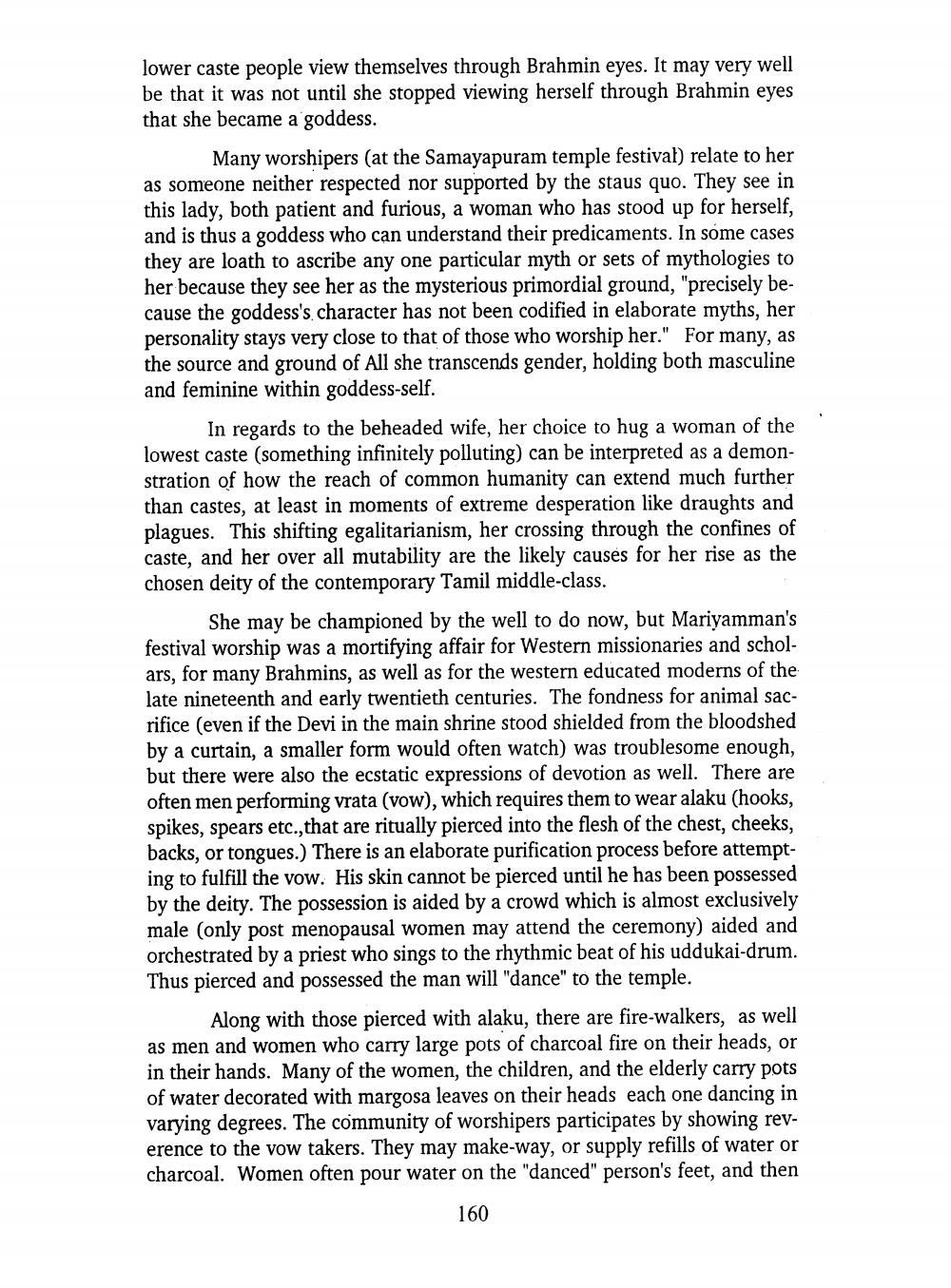________________
lower caste people view themselves through Brahmin eyes. It may very well be that it was not until she stopped viewing herself through Brahmin eyes that she became a goddess.
Many worshipers (at the Samayapuram temple festival) relate to her as someone neither respected nor supported by the staus quo. They see in this lady, both patient and furious, a woman who has stood up for herself, and is thus a goddess who can understand their predicaments. In some cases they are loath to ascribe any one particular myth or sets of mythologies to her because they see her as the mysterious primordial ground, "precisely because the goddess's character has not been codified in elaborate myths, her personality stays very close to that of those who worship her." For many, as the source and ground of All she transcends gender, holding both masculine and feminine within goddess-self.
In regards to the beheaded wife, her choice to hug a woman of the lowest caste (something infinitely polluting) can be interpreted as a demonstration of how the reach of common humanity can extend much further than castes, at least in moments of extreme desperation like draughts and plagues. This shifting egalitarianism, her crossing through the confines of caste, and her over all mutability are the likely causes for her rise as the chosen deity of the contemporary Tamil middle-class.
She may be championed by the well to do now, but Mariyamman's festival worship was a mortifying affair for Western missionaries and scholars, for many Brahmins, as well as for the western educated moderns of the late nineteenth and early twentieth centuries. The fondness for animal sacrifice (even if the Devi in the main shrine stood shielded from the bloodshed by a curtain, a smaller form would often watch) was troublesome enough, but there were also the ecstatic expressions of devotion as well. There are often men performing vrata (vow), which requires them to wear alaku (hooks, spikes, spears etc., that are ritually pierced into the flesh of the chest, cheeks, backs, or tongues.) There is an elaborate purification process before attempting to fulfill the vow. His skin cannot be pierced until he has been possessed by the deity. The possession is aided by a crowd which is almost exclusively male (only post menopausal women may attend the ceremony) aided and orchestrated by a priest who sings to the rhythmic beat of his uddukai-drum. Thus pierced and possessed the man will "dance" to the temple.
Along with those pierced with alaku, there are fire-walkers, as well as men and women who carry large pots of charcoal fire on their heads, or in their hands. Many of the women, the children, and the elderly carry pots of water decorated with margosa leaves on their heads each one dancing in varying degrees. The community of worshipers participates by showing reverence to the vow takers. They may make-way, or supply refills of water or charcoal. Women often pour water on the "danced" person's feet, and then
160




